
www.nemonymous.com
Des Lewis - GESTALT REAL-TIME BOOK REVIEWS
A FEARLESS FAITH IN FICTION — THE PASSION OF THE READING MOMENT CRYSTALLISED — Empirical literary critiques from 2008 as based on purchased books.
Wednesday, October 25, 2017
Tuesday, October 24, 2017
New Fears
New Fears
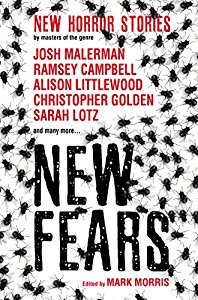
Edited by Mark Morris
Titan Books 2017
When I review this anthology, my thoughts will appear in the comments stream below… (My reviewing queue of purchased publications is growing longer and I don’t expect to catch up until November).
THE BOGGLE HOLE – Alison Littlewood
SHEPHERDS’ BUSINESS – Stephen Gallagher
NO GOOD DEED – Angela Slatter
THE FAMILY CAR – Brady Golden
FOUR ABSTRACTS – Nina Allan
SHELTERED IN PLACE – Brian Keene
THE FOLD IN THE HEART – Chaz Brenchley
DEPARTURES – AK Benedict
THE SALTER COLLECTION – Brian Lillie
SPEAKING STILL – Ramsey Campbell
THE EYES ARE WHITE AND QUIET – Carole Johnstone
THE EMBARRASSMENT OF DEAD GRANDMOTHERS – Sarah Lotz
EUMENIDES (THE BENEVOLENT LADIES) – Adam Nevill
ROUNDABOUT – Muriel Gray
THE HOUSE OF THE HEAD – Josh Malerman
SUCCULENTS – Conrad Williams
DOLLIES – Kathryn Ptacek
THE ABDUCTION DOOR – Christopher Golden
THE SWAN DIVE – Stephen Laws
Dead LettersIn "adam LG nevill"
The Burning CircusIn "Adam Nevill"
SOMETHING REMAINS - Joel Lane and FriendsIn "adam millard"
23 thoughts on “New Fears”
- THE BOGGLE HOLE by Alison Littlewood
A moving tale of a boy (sent on holiday with his granddad by his wayward Mum), the granddad’s still tiptoeing around his late wife (the grandmother the boy was barely old enough to remember), ‘found art’ as linking mementoes, lost stones precious or not, Silence as something living, and a monster real or imaginary, benign or otherwise, in this tenuous process…and much beach pareidolia, too.
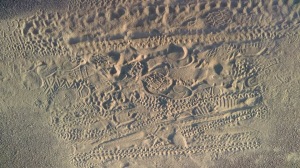
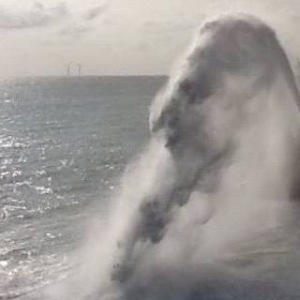
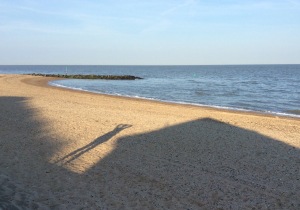

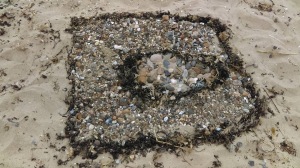


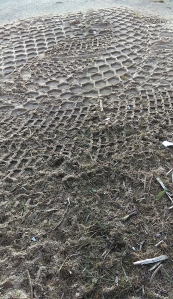
- Pareidolia / apophenia needs ‘boggle holes’ to squint….
- SHEPHERDS’ BUSINESS by Stephen Gallagher
“One of my teachers might have diagnosed a case of TMB: Too Many Birthdays.”
A professionally caught captivating casting of a narration by a doctor in 1947 arriving as potentially permanent locum on a Scottish island where there had been a POW camp for Italians. A believable genius loci, as well as honest-to-goodness potential patients and medical entourage, whereby death, birth and marital relationships borrowed copyist exchange livestock habits from the sheep they tended in this rough land and still rough times before I was born in 1948. I was touched, for example, by the prospect of burying stillborn babies within a stranger’s coffin – not for impecunious reasons but more for companionship in the afterlife?
Honest to goodness tale, straight between my reading eyes. Honestly, effectively unsubtle crafting.
“I’ll leave it to your H. E. Bateses and D. H. Lawrences to explore that one, with their greater gifts than mine.” 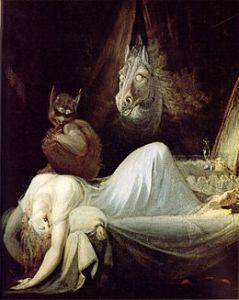 NO GOOD DEED by Angela Slatter
NO GOOD DEED by Angela Slatter
“Oh, you think yourself ridden by the mare of night?”
“….where all things might end or begin again depending on the whims of her womb.”
There are no NEW fears, only endemic ones in changed settings ever to be relived or interpreted anew. And this text turns in its own grave at this my attempt to hawl it… but turns towards me or away?
As a darkly rich apotheosis of Tanith Lee, Mary Shelley, Charlotte Perkins Gilman and ‘Monk’ Lewis, this Slatter is a woman tagged and wired not only for her ends and means but also eventually for what niches lie beneath her puppy fat. Niches and riches. Longer dead self helping her newly dead self, she rises from some pent prison she deems to be a body spent, to take vengeance upon a tangle of female cousinage to find wherein it her Trajan husband still nests… with more weapons of womanhood than a simple secret hairpin. A fortune, if hoarded can only at the end be wasted, transient money and flesh alike…. But such concerns are as nothing when compared to things eventually to be learned beyond life?
“As for madness, sometimes taking refuge in it is the only way to maintain a modicum of sanity.”- THE FAMILY CAR by Brady Golden
“The sensible thing would be to try to steal a little more sleep,”
An initially plain-spoken style in contrast to the textured Gothic of the Slatter and the pareidolia of the Littlewood, but with an equal sense of a dead self helping a living self escape. That Shepherd’s Business of changelings, too.
Indeed, the Golden is a yellowing, tellingly oblique plain-spokenness as we follow a narrative empathy from a young girl then woman Lindsay’s Duel with a tailgating vehicle through whose window one cannot fully see the driver. A metaphor for human family and purpose, but a purpose with no meaning. Except a final more textured frightening vision that transcends obliquity with a meaning that only the horror genre can manage.
“The world’s motor has been set at half-speed so that Lindsay won’t miss anything, won’t miss the fact that there isn’t anything to miss.” - Cross-referenced this review here: https://dflewisreviews.wordpress.com/2017/09/16/4-3-2-1-paul-auster/
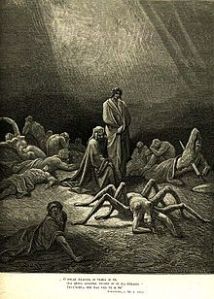 FOUR ABSTRACTS by Nina Allan
FOUR ABSTRACTS by Nina Allan
“You don’t know my mum,” she said. “It was probably just her way of explaining puberty to me.”
A powerful continuation of this book’s changeling gestalt so far, if that is what it is. About an artist, her paintings, a woman talking to us, writing, too, even archiving about another woman, her escape from various relationships of family and lovers and friends, from London to an outlying part of Devon. A St Joan herself, in many ways. Both parties almost blending, as part of life’s slippage into death. The portrait of such slippage is terribly haunting. Constructive, too.
“Possessions are like a safety blanket, a proof of identity—a proof of existence, even. Then suddenly when you die, they’re just rubbish to be cleared.”
A kiss in spidery writing. I shuddered at many of the places when I was meant to shudder during the reading of this fulsome, characterful, often downbeat tale to which I can do no real justice here. The mention, though, of endometriosis gave me the greatest shudder, as I know what one sufferer among my own lineage of linkage must suffer. As she has often sadly revealed to my wife and I, among those hopefully many brighter moments between. Even if the linkage with Doré was frightening. Meanwhile…
“I had to laugh. There are people […] who will take a simple coincidence and dress it up as a grand conspiracy in the space of a heartbeat, but I have never been one of them.”
Yet, I link here to a coincidentally concurrent real-time review that is a similar powerful ‘fiction’ about a real-life artist, as this seminal Nina Allan story is, too. Gestalts need belief. Healing, too.- SHELTERED IN PLACE by Brian Keene
A short contrastive mass-shooter scenario as foil to the semantic texture of the previous story – and of the next?
Interesting insight into police tactics.
A quick-change changeling by geared omniscience.
A gory punch in the reading gut.
“I still had to pee, though.” - THE FOLD IN THE HEART by Chaz Brenchley
“In later years she’d join local kids and visitors in rowdy games of tag or kiss chase, where the fold was always home, safe ground.
Now that she was grown,…”
Rowan her name, rowdy games … now grown, just. A rhythm of letters.
Same age as Josh. Youthful model-boat builder, with oar or origami unleashed?
A triangle of roles, of inscrutable making of items, an older man, the narrative viewpoint, standing between the young woman and young man, or joining them?
Joining them in storm’s extremis, a recurrent pattern, a pareidolia of inheritance. Remarkable, perhaps, that I used the word ‘pareidolia’ earlier in this real-time review, but now it is used explicitly in this story. A pareidolia that brings the dead back to you as the dead’s need – or yours?
The fold (sheepfold or fold in origami?) as point of clinching against the storm and flood. Or tugging, then hauling … I often call it hawling or dreamcatching in my reviews over the years.
This emotional story was made for me to read. Inadvertently.
A bit of a DH Lawrence type short story blended with something quite else.
You have to accept the numinous then walk away.
Each of us a changeling of an earlier self.
“Unless that whole package existed separate from ourselves, and we merely inhabited the roles for a while, each in turn. It could feel that way sometimes, that we were groomed by some force outside ourselves, shaped to fit and held in place by a nameless inevitability.”  DEPARTURES by A. K. Benedict
DEPARTURES by A. K. Benedict
“Then grab hold of you, fold your future spirit into your past body and persuade it not to die.”
The previous ‘fold’ continues, a sort of purgatory in a pub in Dublin airport’s departures… or is it some self-claimed “Socratic shit”, where ‘angel’s share’ is just another brand of beer like Barley Wine or Final Selection?
Ghosts in the smoke, a Samuel Beckett scenario if he had lived to write it, where bodies and ghosts ever seek each other out, changelings to fit like hands in gloves, or shapes into their own hollows, memories pickled in alcohol, with some pretty remarkable similes scattered throughout.
“Something is off-kilter, like the illusion of a straw kinked in a cocktail glass.”
To fix your self in yourself see if you can remember how many Bond themes Bassey did.- Photo taken today on Clacton Pier.
- THE SALTER COLLECTION by Brian Lillie
“I have been working on an article on Alexander Scriabin of all people…”
Wax cylinder archivist and Melville completist Alice links with unlikely partner against horror, that partner being a nasty old man, the coughing gnome called Caul, as they both triage mysterious splattering intrusion and outrage among the cylinders.
Here the Special Collections area is akin to Departures in the previous story, whereby cylinders seem to spawn inner-changelings as recordings for bespoke spindles, instilling a vision of their original collector and hidden sounds of his two huge dogs and the forest where he walked. I felt a hint of a gestalt of music I love, a whole cccult counterpoint, not a whole, though, perhaps, but a whale that hid its caul of blabbing blubber, but then I shook off that thought…till now. A very insidious tale, ostensibly well-written and crisp in phonetic-semantic-syntactic style, still getting at me…making me put it down to prevent needless further comment. (But I recall there is a PIN number 1234 mentioned in it, while I concurrently am reading and real-time reviewing here a book called 4321.) - SPEAKING STILL by Ramsey Campbell
“There’s a call to reclassify schizophrenia as a spectrum instead of a disease.”
That being a call on your mobile.
The internet as a speaking sort of smart still or beer vat or psycho sump for spite from the dead to the living? Real ale as a doctor’s medicine like Mohammad’s Prohibition or Hound’s Howl …. accountancy of message texts or voicemail to contact the loved one, an ingenious method to take calls from the wormy grave? Whereby second childhood lasts for ever, with marital or parental love having a price in the profit and loss balance sheet. Ingenious chilling concept, indeed. - THE EYES ARE WHITE AND QUIET by Carole Johnstone
I am afraid I could not get into this story at all. My fault. - THE EMBARRASSMENT OF DEAD GRANDMOTHERS by Sarah Lotz
“Paralegals can be cruel; conveyancers can be brutal. I’ve seen the group emails that waft through the office like sarin gas.”
A hilarious squirmy-humiliation of a story, office worker meeting a colleague by chance during a poor performance of PHANTOM. Mixed with nostalgia for grandmotherly eccentricity. If I tell you more you will miss the point of what is sitting right next to you and how we all sublimate each other’s fearful archetypes. And decisions that nag at you in slow motion till you leave this latest decision to decide itself autonomously. 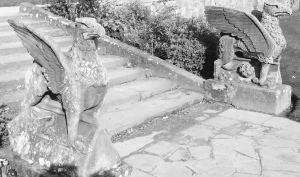 EUMENIDES (THE BENEVOLENT LADIES) by Adam L. G. Nevill
EUMENIDES (THE BENEVOLENT LADIES) by Adam L. G. Nevill
“The area was a kind of anti-matter and stuck at the intersection of new, fast roads that swept people past it.”
Feeding back to the humdrum office job in the previous story and across to the territory where I read this book’s previous few stories in the no man’s land between Coventry and Derbyshire’s Piques (my above photo from Ophelia Day’s red sun itself on that journey). And towards a kindred Zoo domain I have explored already in my own literary novel, re-evoked by that photo and this Nevill text, Nevil being a strange mattersome evil in itself. No wonder I loved its blatant-subtle horrors, the crass dating of man to sex object woman and fast road syndrome surrounding ancient mysteries of erotic girth and insane health and safety leanings for living things. And the striking portrait of today’s social mores of the nosey parkers, the crass-ordinary and fake histories now made real just for spite.- ROUNDABOUT by Muriel Gray
“Your average driver speeds past and never has half a clue about the wildlife living in these wooded islands, right in the middle of an ocean of traffic, where no human ever treads.”
I first thought from the merry-go-round title this might have been written by Willum’s friend Muriel the Young, not by Muriel the Gray. But, then, I knew, following the trend of Nevill’s previous story, with fast roads surrounding – or surrounded by – a strange lifeform of travellers, there a zoo of sexual engulfment, here an overgrown traffic roundabout, full of trash worse even than that discarded by thinkless people onto verges, including, in this scenario, the near-forgotten history of some City of Culture work of art planted on the roundabout by its own discarded crashout of an artist, hazards still flashing, and now a clearance-ambitious young workman with his wife’s meat paste sandwiches beep beep beeps backward in his truck to rid the roundabout of that darkly insidious dereliction of now ‘found’ art… A static climax that runs my own battery out thinkin’ about it. A ‘found’ monument of fiction that would have stood out even more if the other stories around it hadn’t stood out, too. - THE HOUSE OF THE HEAD by Josh Malerman
“Lived inside.
The Smithsmiths.”
For me, this is seriously a potential ghost story classic-in-hindsight, a childgirl’s own view of a haunting of a house within a house involving another child, parents, added catalyst people, dogs and a decapitated head, a story that also seems to be a theme-and-variations on the title: ‘The Haunted and the Haunters: Or the House and the Brain’ (a story by Sir Edward Bulwer-Lytton) when coupled with a whodunnit that could easily have come from one of many of GK Chesterton’s Father Brown stories that I gestalt real-time reviewed here, then seasoned with a pinch of Aickman. But it is essentially unique, and hauntingly memorable. Still thinking about it. Wondering where I put my own head in the process. Tell me what you think. - SUCCULENTS by Conrad Williams
“When did you lose that playfulness, that drive? When did you go from let’s play out to let’s lie in?”
A middle-aging, recently disheartened by heart trouble, man and his wayward wife and son, on holiday abroad, a sort of Mediterranean package where horror tropes reveal themselves to the munching sound of bar snacks.
A big ass admiring, and prove yourself still a man younger than you think you are, sort of joyless jaunt, still with the cares of making sure one’s offspring does not spring off into dangers, including your own dreams from ooze-filled rusty flower buds forcefed earlier that peppered steak later fails to mask the taste of – making your dreams form part of the company in your belly, and become a nightmare of your shipwrecked rusting self. Amorphous, unsure, but often perceptive about a certain sort of crass co-humanity with whom we share this shipwreck of a world?
“His mind could not cope with the narratives he was forcing upon everything;”- Cross-referenced this story with Palankar here: https://dflewisreviews.wordpress.com/2017/09/28/nightscript-vol-iii/#comment-10827
- DOLLIES by Kathryn Ptacek
“Somehow, I knew.”
The haunting tale of a girl from about 7 to 15. She diffidently and passively collects dolls all of whom she calls Elizabeth and a number representing the order in which they arrive, with them eventually dying, in her eyes, of small pox, with the spread of blue dots, reminding me vaguely of things gradually coming to a head in the Malerman. She then puts each doll on the death shelf. Her relationship with her parents is adumbrated, too. And the pitfalls and spoils of growing up as such a girl whom she turns out to be. Somehow, you will know more, too. But will I tell you more here? Nope.
“I felt wetness on my cheeks, and I realized I was crying, only I didn’t know why.” - THE ABDUCTION DOOR by Christopher Golden
“…and I settle in for the long haul. Waiting for the abduction door to reappear.”
Whilst the concept of the abduction door itself is wonderfully unique to this work, it is also a story reminding me of parts of possibly my favourite ever novel THE UNCONSOLED by Kazuo Ishiguro (who won the Nobel Prize recently when I reread it and real-time reviewed it), including the nature of the hotel, the liftman Cyril as akin to Ishiguro’s porter, the Sense of the Absurd, often frightening … slants of Poliakoff, too, with his nagging angst and frustrating anxiety etc. The wife and the daughter of the protagonist, very sad additions to that atmosphere. And I also wondered, in this context, whether Ptacek’s girl character in the previous story had thirteen Elizabeths…? Think about it.
“…as if my hunger is a child growing there.” - THE SWAN DIVE by Stephen Laws
“… I realised it had been a severed human head, its face matted with straggling hair.
‘Would you like me to sing to you?’ asked Swan.
‘No thank you.’”
That may give you some idea. This initially Blakean vision on a suicide bridge over an evocative genius-loci of the Tyne in Newcastle, is nothing if not compelling. Compelling to get to its end to see how utterly off-the-bridge it truly is. So worrying, more horrific than any other work in this anthology, so horrific, in a mad sense, to conceive that anyone could have have actually sat down to want to write this work or find himself writing it, then someone sitting down to read it and then deciding actually to publish it! A dive by a man called Elton Perdue whose life and marriage seems to have taken their own dive, a dive that perceives itself as if in this book’s gestalt of the changeling pareidolia as a back-upward soar from the water patterns in the river that his (attempted?) suicide had brought him to be poised above, in his act of a swan dive rather than just a manic jump. Back to the bridge and a winged shadow a bit like the Gateshead angel, to my mind, that starts a train of events that seem to mimic a terrorist event with a marital conflux of human players in that personal drama back in his flat, and much else, even attitudes towards gay men in certain pubs or diners in Newcastle. There is no way this work can be reconciled with any meaning. Not politically incorrect or correct, but one where the words give your mind some sort of gratuitous inquisition or correction. Or it just is.
“The traffic still didn’t care. It had places to go.
But this was where I had to be.”
The swan dive of this book itself? The New Fears taking on the final gestalt of involuntary pareidolia and the changelings of insanity.
“I wondered when the fear would come; wondered when the utter emptiness inside would be filled with it.”
“The fear hadn’t come. The fear might not come at all.”
end
Subscribe to:
Comments (Atom)

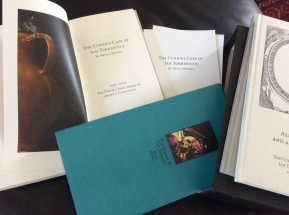
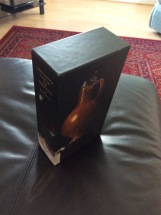
For those readers reading the new stylish six volume set, with their covers a gradual growdown of greys, I show below my original review in 2014 of the first three volumes that were originally published alone as one luxurious greeny-blue volume. As you will see, I said here that all my gestalt real-time reviews are based on my first reading of a work. So, I will not be re-reading the first three volumes. However, meanwhile, the guile and double-take of these book versions are admirably fitting to their subject, judging by what I said below three years ago about this first edition:-
.The Curious Case of Jan Torrentius and the Followers of the Rosy Cross
By Brian Howell
Vandike and I
“…no more than you can remove a layer of paint from the one above without destroying the whole.”
Although this is not my normal practice in fiction reviews but — based on my past experience in reading this author’s exquisitely crafted novel about Vermeer, The Dance of Geometry — I suggest you google ‘Jan Torrentius’ just to get a flavour for optimum returns. Not too much googling, though, but just the bare minimum to centre your callow self in the era and ethos.
These first passages in the book do not disappoint the hopes of any reader of that earlier novel, the prose style imaging and characterisation being as if from a camera obscura created by the inner dome of a vast cathedral but with finely meticulous results and any eroticism being sufficient to make you blush with embarrassment or blood pressure.
*
I am truly astonished by this text so far, the holding fast of its passing images, Jan’s first person backstory, the conspiracies, the collusive couple with whom Jan constructs both finely vesselised art as well as sweatily entrancing the female half, the alchemy of painting, the cruel appropriation of animal eyes, devices such as camera obscura and torture instruments, the name-dropping of historical figures, your trying to hold fast to all these images real and fictional and magickal through the Howelling eye. All my real-time reviews are based on my first reading of any book. My stream of consciousness has already turned to torrent. This book is something special. I will read it, indeed relish reading it, real-time reviewing it at first vesselised sight, as you will, callow though you be, even if you mete out the days to try slow its torrent, or will it let you? Think Jonathan Strange and Mr Norrell?
……………………………………………
VOLUME TWO
Ex Anglia reversus
“…a newly formed gap between two teeth and which could, equally, like that gap, be a source of pleasure or frustration.”
I am now seriously trapped by this book, but I still intend to try stem its torrent. Now, we have the engaging penned view of Jan Torrentius by a historical third party, and the language and hints continue to accrete as to his nature, as a salon painting competition impends (still to be resolved), a competition or artistic duel stemming from a most intriguing demonstration of a street view by camera obscura, all imbued with a sense of magick, tricksy silences, comings and goings, amid a tangible 17th century historical ambiance plus a real poem by one of my favourite poets, Donne. And wordplays upon stream and torrent, brook and flood.
*
“…and I felt myself very much in the presence of History.”
…or History embracing me, with all its truth and reality as well its reflected contrivance via eyes that are not mine, primary sources notwithstanding.
This book is astonishing, really, in its ability to divert linear truth by curtains over doorways (cf my view of ‘Tristram Shandy’) as well as by mirrors or camera obscura, with digressions that, we are told, are destined to return to the stream’s source however much they torrent off course. And the painting competition plot machinations do in fact move on and act as a structure upon which a vision of historical time and metaphysical conceit are magically poured or meticulously brushstroked or wildly daubed. A great fiction book is a sort of diversionary instrument – forming digressions from the otherwise inevitable audit-trail of your life – a device to distil truth from paradox upon each and every occasion in your life you happen to read such a book. This book promises to be an optimum version of such a cunning contraption, I feel.
*
“But each has achieved this without seeing his rival’s work.”
I was not disappointed by the outcome of this section of the book, tantalisingly in spite or because of reaching a sort of vanishing-point, after considerations of still-life palimpsests, a skull and other objects, ‘imaginary triangle’, having bearing upon my gestalt real-time reviewing techniques since 2008 including my theories on reader triangulation, plus my considerations of literary plagiarism and, above all, my own past view of Holbein’s painted skull called ‘The Preterite and the Preinternet’…
So, yes, I am not only ‘not disappointed’ by the painting competition’s outcome, but also decidedly inspired by its uniqueness and by its on-going mechanics of characterisation as part of a modernistic ‘happening’ filtered through 17th century sensibilities. A filter working both ways between now (a ‘now’ with this book first published in 2014 by luxurious sleight of hand) and then (a ‘then’ whereby, say, Donne still lives and writes poems even while I write this).
…………………………………………
VOLUME THREE
Cornelis Drubelsius Alcmariensis
“Let me explain. He was there the day I showed my ‘perpetuum mobile’,…”
Which made me think, in tune with the comma as device in “Mobile, Phone”, that the alchemy of painting in this book could travel by sound as well as by light? Meanwhile, on a saner note, this is the start of the third and final section of this book, a new narrative angle coordinating truth in this fiction from a new point on the globe of 17th century civilisation, forming the aforementioned ‘triangulation’. Yet, I believe this book is Volume One of triangulating Torrentius and who knows yet what might be further triangulated of him within whatever hologram of sight and sound the yet unpublished next volume may already hold? A stream and torrent, as in all riparian matters, are surely sound as well as sight, but each does not exist as the same structure of object to see or hear from one moment to another. Text, when mimed or mouthed upon reading it, is surrogate sound, I suggest.
This book is full of contraptions, contrivances, devices, and you need to hold fast to yourself as reader to avoid becoming their puppet or doll. For example, I had to shake off the sound of the bubbling devices of experiment in the Alec Guinness film about a Man in a White Suit when now learning of the properties of colours and how Torrentius operates them.
“…I began to wonder where the reality of the objects we were viewing gave way to their images and, indeed, where the images took over from the objects.”
*
“But I had not anticipated those unnerving sounds, then the sudden quiet, and the feeling of pressure on our ears.”
This book remains more sight than sound, but one cannot discount the Royal conspiracy that involves, I infer, codes relating to the Rosy Cross via Music, the sounds in the ears when in an underwater rabbit-eye vesselised craft using the riparian Thames as stream or torrent under the narrative bridge …. and (Toyn)bees as music. A book of place as well as time, with London, Prague, Amsterdam forming well-historicised genii loci… a legerdemain ‘mobile quality’ with exquisitely crisp but tessellated prose, and a political historomancy of a plot in which Jonathan Strange and Mr Norrell might once have been implicated as I earlier predicted – and a device for the hatching of eggs without hens, a book within a book as a hen and egg conundrum, with a promised creation of a double yolk that is probably even more legerdemain de L’OUBLI than this one! A Book of Tricksy Philosophical Aesthetics. A prestidigitator’s booth or cabinet to enter, but beware, by just opening its door you will never know if you’ve entered it, but if you have entered it, you will never know whether you have left it.
Volume 1 = Part 6
Volume 2 = Part 1
Volume 3 = Part 2
Please see further sub-comment today just below the next main comment.
The final three volumes (4th, 5th and 6th) of this Curious Case as first editions:
Real-time review of these to be started in due course below…
Part Three: A Small Picture of Torentius Hand
.Pages 5 – 11
SPOILER: You may do well to revisit https://en.m.wikipedia.org/wiki/Johannes_van_der_Beeck (Wikipedia for Jan Torrentius)
Not that is essential or even advisable. And I regretted not to approach this book as a tabula rasa. But why the missing r in this part’s subtitle, missing on spine, cover and title page?
We follow, via a written statement of a hard done-by participant (once a suspect in the gunpowder plot), the (King Charles) surrounding circumstances in the resurrection of Jan from prison, Jan’s shackled mien seen there, comparison with Rubens and the Jan painting that one can see on that Wikipedia. Gorgeous description of that still life with shadows and brinkish effects and the fact Jan was a poorer painter at human figures. But how can we judge? Where are these paintings? This book will give you these images in the mind’s eye, I am confident. If only by osmosis?
“one could not resist the sensation that the glass would fall at any moment.”
“I feared that too much pressure in my foot might bring about the return of that old devil, the gout.”
Alternative facts or too many truths to cope with, as gout-fearing Lord Dorchester, on behalf of King Charles, continues to tell us of his first impressions of Jan in prison. Jan says he likes pulling people’s legs, then is delivered a chicken leg to eat while the statement talks of seeing something wrong with one of Jan’s own legs. Heresies and sects, Christian religion seems to me to be on the brink of Devilry anyway. I am beginning to like both these characters as filtered by the words of one of them.
“I could not understand the wenching variety of man.”
From Correspondence with the King etc, and Dorchester’s account of conversations, we gradually build a scenario here, fraught with innuendo about Jan, including reference to Rubens and Descartes, and other proclivities. And the art business at that time. Mention of Rembrandt seems germane, too. I leave the text on a cliffhanger as the paintings are about to be viewed before bed.
“I sensed a beauty to the encounter, but equally a sadness and danger.”
“Wat but-en maat be-staat, int on-maats qaat ver-gaat.”
I thought maat or ma’at was a part of some mystical religion of holism or gestalt, similar to my own. And Maastricht the beginning of the curse of Braaxit? I follow Dorchester as he looks at these still-lives for real and then sees them again but differently as part of his dozing dreams.
“(I do not give credence to the stories of sounds coming from the paint being of magical origin)”
Constanter’s letter Feb 1629 to Mr Carleton (aka Lord Dorchester).
We receive dark hints about Jan, via various sources, such as this letter. Implicating ‘cheating’ with a camera obscura to create the painting in question (the painting viewable on that Wikipedia to which I linked earlier) rather than by occult means, or perhaps by both these means, and yet others?
But I have equal suspicions about the author and publisher(s) as this work’s creative gestalt, a teasing gestalt of disorderly or occult conundrum and literary legerdemain. The curiouser and curiouser case of Jan T, I originally thought. But perhaps it is the curiousest of curiousest! (By the way, ‘constanter’ – if not ‘curiouser’ – was first referenced by an 1879 Latin Dictionary with which Charlton T. Lewis and Charles Short were heavily involved.)
“That said, I do not believe I will see the like again in my life of such re-presenting…”
“, besides which it was unusual for me not to be accompanied by someone on my travels.”
But now there IS a companion, the constanter curiouser recipient of this narrative letter, and thus by dint of this book’s literary alchemy upon this letter, the companion becomes the reader: myself … from Carleton to Lewis…
Carleton’s told journey is unforgettable, I suggest, with dove and raven, and then a strange house, and what painterly and contrastive visions inside! Alchemy, or as is hinted by the text itself, is it ‘blasphemy’ instead? All from his pursuit of more works by Jan on behalf of King Charles and seeking those who collect them. A collector now whose portrait has ostensibly been perpetrated by Hals, a painter whom I also saw in Haarlem, when I was there a few years ago. I sense this book has since been pursuing me! And, in view of this own book’s shenanigans, this short passage about the “curious house” takes on new meaning: “, and I was curious to know the dimensions of the building, how the back part of it continued into the main part in which we sat.”
“We offer no reward and no threat, simply enlightenment, of a kind. It is our hope that there will be a revelation that will change all things.”
The comma after ‘enlightenment’ seems significant. No plot spoilers from me, but it’s more a plot as in Gunpowder Plot as in any story plot that I try to protect from you. My visit to the Curious House of Massa, meanwhile, takes on its own chiaroscuro miracles of vision, but which are dreams, which real? You will not credit some of what I have just been through, including my now doubtful possession of the Jan painting that I showed on my Facebook yesterday for all my friends under Jan’s real name. The book volumes and their numbering are complicit, too, I guess. Anyone have the six volume boxed set, instead of my purity of first editions? Has any of the text been changed between the various versions? The end the beginning, the beginning the end? Every comma needs to be accounted for. And are we all, by sublimation, being invited into some Torrentius movement to obviate the effects of our world condition today?
Part Four: The Vowell that makes so sweet a Consonant
.Pages 5 & 6
“…a diary of sorts, a little rearranged in time and with the lightest hindsight added,”
“, but in which could be found knitted a pattern which would not be visible when seen close to,”
“, just as a landscape is only truly revealed from a high vantage.”
The start of this ‘diary’ by Elizabeth Stuart, Queen of Bohemia, seems to indicate the importance of gestalt real-time reviewing with regard to this, Howell’s continuing scatterology of Torrentius.
But I keep my powder dry.
“, but surely this could not have been coincidence?”
Elizabeth, in her statement or diary letter to Constanter, implicates all of us who are reading this, implicated in Donne and other verse, streams and torrents, becoming incognito in the Netherlands, Haarlem, Amsterdam, and a masque or role play in a dubious tavern (despite her royal marriage), and dubious characters, including a sudden revelation of identity and non-coincidence, but I will not spoil it further…
There will now be an expected week and a half’s soft brexit, not a hard border, that is, a break in this review while I and my companion travel on supposed holiday to I tell you not where….
Like Elizabeth and her companion, I feel as if I have just witnessed a dream of mixed strangeness and familiarity in the last few pages. Yet riffling back, it is still all there, including what seemed like a giant beetle in slow progress up a wall. Whether this is the author’s dream or her dream or something induced by the other characters’ machinations of masque or some Rosicrucian spell, I am unsure.
“As I was beginning to learn, it seemed a condition of any meeting with Torrentius that one met him in a memorable place and in an equally memorable fashion.”
…as we all do, when meeting Torrentius in this increasingly momentous set of books. Still with Elizabeth’s account of the ifs and buts of history around her, deploying her connections with our own Gunpowder Plot and the consorting with machinations of who would be the Holy Roman Emperor, and the merging of all religions as one, and here further Muses, mazes, masques (mosques?), mandrake-like shapes (cf Donne), perspective-boxes and other contraptive miracles featuring a castle within a castle, perceived horrors within such contraptions of a special reality.
“Donne’s sermon was like no other’s, both in choice of word and import. To say that it started out as a brook and ended as a torrent gives no impression of its power.”
It is easy to forget Donne’s sermons for his poems. I have studied them both. And now this exquisite ‘diary’ of Elizabeth gives equally exquisite, exstatic prominence to the sermon he gives in her presence, the apotheosis of ‘now’, the words of which satisfyingly seem to describe, for me, the nature of my own dreamcatching/hawling gestalt of real-time reviews, many reviews over some years now (such as this one) and their philosophy (a philosophy specially created for eventually hawling this very Howell work as culmination?), plus the gestalt of garden, here, her own garden, seen through her new eyes and thus ours, too, and much else concerned with ‘salvation’ and the thrust of this visionary rite of passage that any reader of this book and thus of her diary will experience, a balm for my own old age as I approach death. Exalted exultation. Geometrical patternings. Any political machinations. Notwithstanding.
“and could see the gardens at any time I wished as a whole from on high,”
Rave on John Donne, rave on thy Holy fool
– Van Morrison
Part Five: All States and All Princes
.Pages 5 – 11
“Yet I know not truly if I am leading or concluding the story of this man.”
He can say that again.
Donne’s own 1630 statement addressed (like a poem, sermon, or diary?) to this book’s curiouser and curiouser Constanter seems to start here, with its own perspective-box of the meetings of Elizabeth, Torrentius et al in the aforementioned gestalt of garden. I am absolutely entrammelled. No way out for me from masque, muse or maze. Or hidden Donne poem that I did not know existed? Even a book review has its mazes or muses, sometimes inimical ones?
Some tantalising experiences that Donne allows Constanter to share, and us to share, too, by dint of his diary’s publication here via the Howell hawling of it, as Jan and others take Donne’s own dint through dents of both worry and inspiration, with some magical connections with our own times as well as to 17th century history. Creating a new religious force for whatever they deem is good. A channelling of a ritual-literary Damian Murphy approach to revelation and spiritual development, or the Brian Howell source of such phenomena being channelled by Murphy? Neither having read the work of the other? Torrent to torrent without knowing the source at all?
“‘You need not worry. I know it is not witchcraft,’ I stated confidently.
‘By a picture? No, it certainly is not,’ Torrentius rejoined. I was startled by this exchange, which I am sure you, Constanter, will understand. But they made no further mention of this.”
“Do I only now make this connection,…?”
Blindfold, Ceremony, et al.
But is this book its own deflection from the real Torrentius role? A multiple bluff? As were also Donne’s sermons?
Christian Rosencreutz … THE CHYMICAL WEDDING
“, that we believe in the Second Coming, yet by good ways, ways that will unite all Europe. It is also true that the way to this union or understanding is not straight,…”
“This was a beautiful torture:”
And a geometry in his mind of a naked woman’s triangle….?
Residual meetings before Lucy conveys to Donne and thus to Constanter and thus to us of what happened in Greenwich later, to which these events were rehearsal. This whole scenario reminds me of a blend of a Retoration Comedy. Or Mozartian opera with masks and overhearings and duplicity. AND with an insidious sort of Kubrickian EYES WIDE SHUT.
I could only read these pages in one sitting, a relentless attrition of not watching the performance for real but having the performance itemised vision by vision, tableau by tableau, that becomes somehow, mysteriously, even more real! And Lucy’s account of this performance to Donne to Constanter to us is like reader and writer becoming one, characters and actors and audience becoming one, including the King, as part and parcel of our hero’s rite of passage in this performance, with floating castles and all manner of preparation rituals earlier in this book, arcanely hatching eggs and Cupids, and much more, and you will not credit how utterly relentless and attritional this account by Lucy is, to such an extent that I could not conceive of anyone wanting to sit down and actually write something so utterly, torrentingly relentless and attritional, and then I could not conceive of any publisher reading it and then wanting to actually publish it! I can thus only conceive that its absorption into the reader’s mindsump is more a Ceremony than an enjoyment of reading. Something occult and strange and important, a streaming of a hidden effulgence, an apotheosis of some unknown John Cowper Powys novel, mixed with a mosh pit of Arthurianism disguised as Rosicrucianism, layered upon our own perceived real Christian and Royal history and Brexit future, as ignited by 17th century Dutch painting through constructively restrained but felt concupiscence and with an overriding Anglo-Japanese filter of a painter called Jan Torrentius who really existed and who seems to have been demonstrably involved in such shenanigans conveyed by this book’s own strange publication shenanigans. (I spent a good part of last week on my break away in a place called Hartington, and Lucy’s name is Harington.)
Part Six: Vandike and I
Two wholes, one gestalt, the muscle memory of creating paintings that somehow already exist.
I have now exceptionally re-read the first edition of ‘Vandike and I’, as the purported sixth part of this series of six books, three of which are first editions themselves. Parts six, one and two I own, you see, as the original single book. The sixth part is indeed a ‘dying fall’ coda to a symphony of camera obscura and other geometries of sex and religious conspiracy, including a painting (below) that blew me away when I first saw it, and here is told Jan’s adoption – beyond his imprisonment and Rosicrucian past – by our royalty in Britain to compete with Van Dyck as court painter. A rabbit’s dying Howell no doubt ringing out alongside his manipulation of important women’s clitorides as part of this purpose. You are never too old to have an endless ‘dying fall’ of obliquity for the rest of time. I suspect this work in now its seeming semi-final semenes will live or die with Torrentius. He is still with us. I sensed him enter my brain at times during my reading. Or perhaps I entered his. Hawling up and down death’s human faces or once tortured animals. “Jan, please, call me Jan,”
“As soon as I saw a rope go up and come down the other side, I guessed what was going to happen.”
end